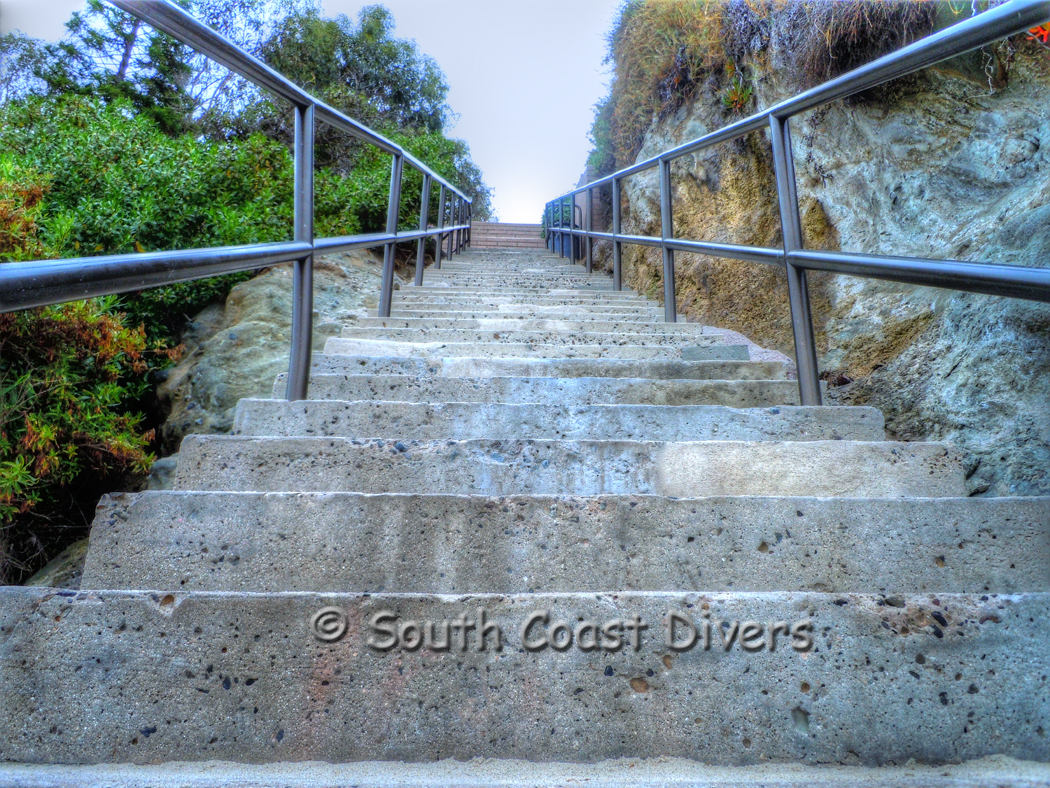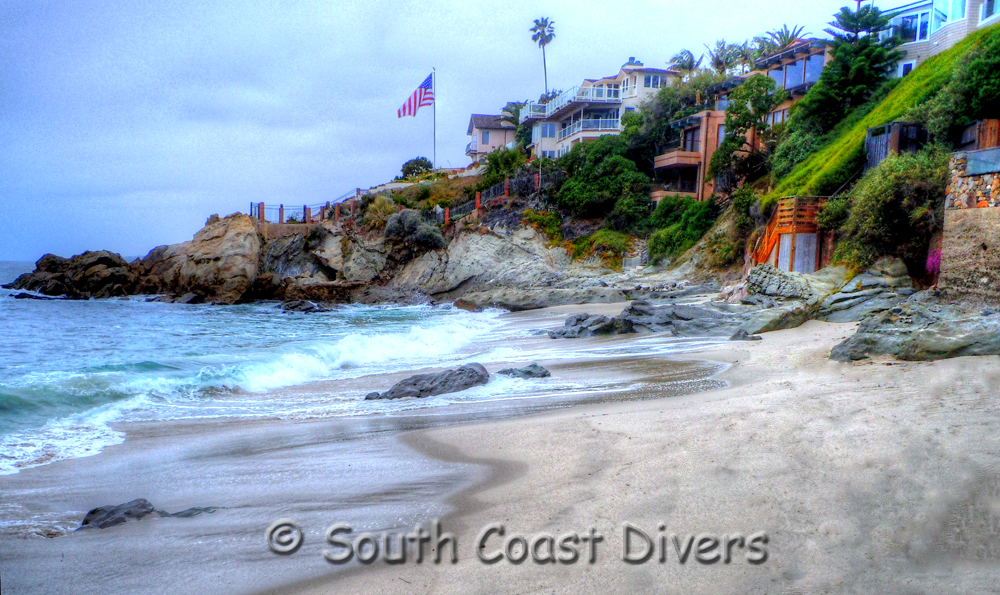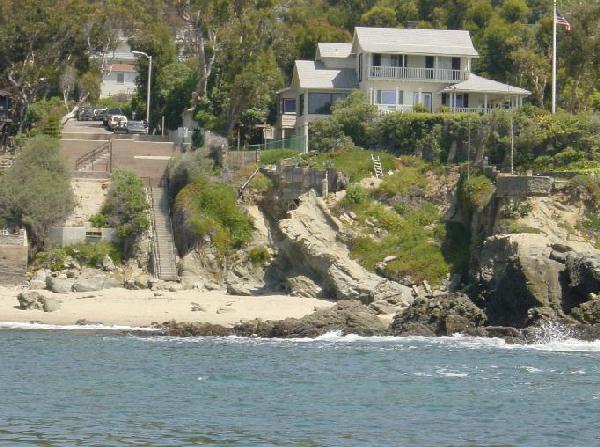Moss Point is considered to be an Advanced dive, because of the very dangerous
Rock Entry. It is very deceiving because it "Looks like" there is very little
"Wave action". But it only takes a 1 to 2 foot wave here to wreck your whole
experience here. This is why there are so many diving related accidents here,
too many divers don't know how to "Read" the conditions here.
Here's how we decide if we are diving here:
First, in the above pictures, there is a rather large rock on/in sand near the center of
the cove (Click on the picture on the left above, you can see how the water goes around this rock).
IF this rock is way above the "Surf line" we don't go diving, tide is too low. But if the
water is coming up around this rock AND the waves are NO larger than 1-2 foot
AND the waves are "Shore breaking" THEN we go in. All your surf entry experience can
be "Put to the test" here, look for the "Breaks" in the surf, that's when you
start heading out.
I've done many, many dives here and I find I get "Surprised" by the conditions
here from time to time, you must "Be on your toes".
Night diving here is a completely different experience here, not because there
is that much more sea life or anything like that. Trying to find the Cove AFTER
you come up is a challenge. Several times, we've been here at night and we
swam "Back & forth" along the shore asking "Where is the COVE??". I've seen some
divers use a "Spotter" on the beach with a flashlite and I've seen others use
a strobe mounted on the lifeguard stand. Both of these ideas are good, but the
best way to do this is to "Know" Moss Point. Don't panic if you seem lost, it took
us over 45 minutes on one evening to locate the cove from beyond it. Take a very
good "Look around" from outside the Cove to get the idea and remember it when you
come back up. Don't count on a house having it's "Light on" when you come up,
try to learn to "See" the street above, that's the best way.
Sea Life here varies, on one day dive, I found a 35-37 inch Halibut sitting on
the bottom, that's big and he wasn't in a hurry to move away, giving us a few
minutes to "Check him out". VIZ here also varies, but if you dive here, make it
at high tide, your surf entries & exits will be easier and VIZ better.
There is also some reefs out in deeper water well outside the Cove, but I've
only been "Lucky enough" to see these once, but I know they are there. So
it "Pays" to hunt around, going over areas of sand, exploring this area.
Make sure you have enough air left in case you have to do the "Moss Point crawl"
on your way back to the beach. If you "Time it right" a wave can actually
"Pick you up" and "Drop you" right on the beach, standing!! I've done it about
15-20% of my dives here, it's a real "Rush" when that happens and it takes a
lot of practice to do it.
But remember this: If there are waves breaking "Out" in the cove (Not on the beach)
AVOID this area. Even if you do make it out, the VIZ won't be worth all the
effort and you STILL have to make it back into the beach. The large rocks in the
surf zone will show you who's "The boss".






